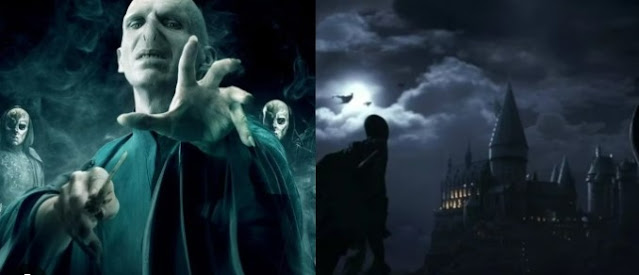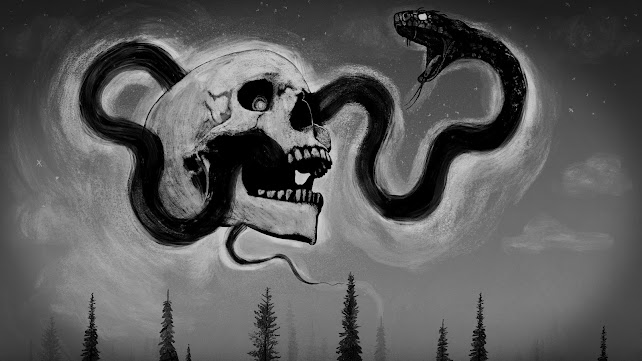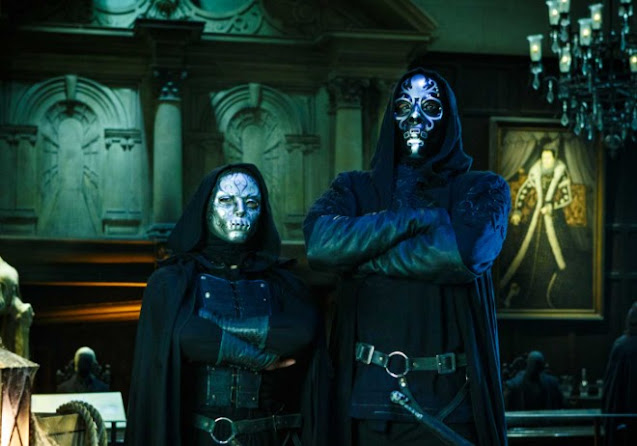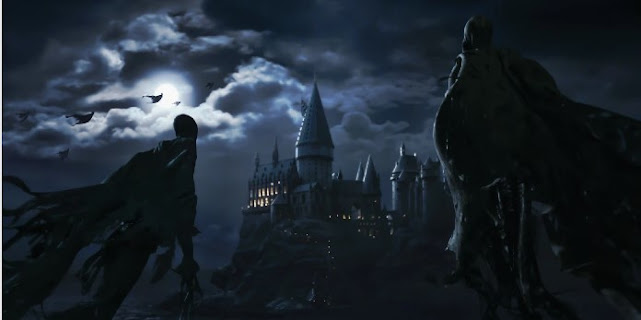 |
| universalstudionhollywood.com |
Enter a realm where the distinction between light and dark magic is hazy, where illegal spells and black arts have a seductive pull. Welcome to the fascinating world of the dark arts in the Harry Potter series, a place full of mysteries, peril, and incredible power. The complicated and enigmatic dark side of magic in J.K. Rowling's well-known series captivates readers. We set out on a mission to comprehend the forbidden side of magic that intrigues and terrifies us, from the hauntingly beautiful Unforgivable Curses to the mysterious Horcruxes.
Join us as we dig into the dark arts and examine those who practice them, their motivations, the repercussions they encounter, and the complex network of spells and rituals that make up this fascinating world. Discover the mysteries hidden in the shadows as we navigate the moral quandaries and ethical issues raised by black magic. Being prepared for this investigation will make you rethink your ideas of good and evil and make you crave learning more about the forbidden arts.
Table of Content
2. Dark arts spells and curses
3. Different Types of Dark Arts
3.2 Hex
3.3 Curses
4. The Different Branches of Dark Arts
5. Notable dark wizards and witches in the Harry Potter series
6. The Allure and Dangers of Practicing Dark Arts
7. The Consequences and Morality of Using Dark Arts
8. The role of dark arts in the plot of the Harry Potter series
9. The Role of the Ministry of Magic in Combating the Dark Arts
10. Counteracting dark arts: Defense Against the Dark Arts
11. The symbolism and themes of Dark Art in the Harry Potter series
12. The Lessons We Can Learn from the Portrayal of the Dark Arts in Harry Potter
13. Conclusion
1. The History and Origins of Dark Arts
The history of the dark arts is long and rich, going back many millennia. The Founders of Hogwarts are where black magic in the wizarding world first appeared. One of the four founders, Salazar Slytherin, was well-known for his devotion to the dark arts and belief in the purity of blood. His legacy served as the cornerstone for the dark magic that subsequently engulfed the wizarding community.
Dark arts have been practiced throughout history by people who desired control, retaliation, or simply the excitement of using prohibited magic. The use of the dark arts has left a black stain on the wizarding world, from Herpo the Foul's invention of the first Horcrux through the ascent of the Dark Lord Voldemort.
The attraction of limitless power and the capacity to manipulate others is what draws people to dark arts. However, using dark magic has dire repercussions that frequently lead to the soul of the user being destroyed and corrupted. Dark arts still have an allure for those ready to pay a price for power despite the dangers.
2. Dark arts spells and curses
The term "dark arts" refers to a group of spells and curses that are illegal because of their destructive and evil nature. The Unforgivable Curses, which include the Imperius Curse, the Cruciatus Curse, and the Killing Curse, are some of the most well-known dark spells.
Dark arts are magical spells and practices that are usually used for nefarious purposes. Dark artists are called 'dark wizards' or 'witches'. The most notable of these is Voldemort, known to them as the 'Dark Lord'. His followers, known as 'Death Eaters', practice the dark arts at his bidding.
Spells that are characteristic of the dark arts are called curses. It usually deals damage to the target. Everything is justified to a certain extent. Also, the caster's motivation affects the outcome of the curse. This is most prominent in the case of Cruciatus.
When Harry, enraged by his godfather's death at Bellatrix's hands, is expected to punish her as well, it causes a brief moment of anguish. As Bellatrix herself says, righteous anger doesn't allow the spell to work for long. Also when cast by people like Voldemort who like to inflict pain at will, it can cause intense pain that can last as long as the dark wizard or witch wishes.
And the soul and body can be corrupted using dark magic. Voldemort used such magic to prolong his life and gain great strength. That's why the Dark Arts made Voldemort look twisted and inhuman. A side effect of dividing his soul into Horcruxes. If you like to read more about Horcrux in Harry Potter, follow this link and read my previous article.
Also according to Snape, the Dark Arts are "many, varied, changing, and eternal incorrigible, warped, indestructible". In magical dueling, there are a number of spells that can be used to attack, immobilize, or disarm an opponent without inflicting pain or lasting damage.
The Imperius Curse gives the caster total power over the victim, turning them into a puppet that may be controlled however they like. The Cruciatus Curse causes its victim to suffer unbearable torment that is beyond description. The Killing Curse, also referred to as Avada Kedavra, is a spell that swiftly and violently kills the victim.
In addition to the Unforgivable Curses, black arts spells include jinxes that bring bad luck to others and curses that damage people physically. Those who wish to hurt, dominate, or intimidate others have access to a toolbox through the dark arts.
3. Different Types of Dark Arts
3.1. Jinx
- Anti-Disapparition Jinx
- Backfiring Jinx
- Cracker Jinx
- Finger-removing Jinx
3.2. Hex
- Bat-Bogey Hex
- Bedazzling Hex
- Deterioration Hex
- Knee-Reversal Hex
3.3. Curses
- Cruciatus Curse
- Conjunctivitis Curse
- Babbling Curse
- Antonin Dolohov's curse
4. The Different Branches of Dark Arts
5. Notable dark wizards and witches in the Harry Potter series
A large number of dark wizards and witches who practice magic's forbidden side are introduced in the Harry Potter books. The series' main enemy is Lord Voldemort, the most infamous evil wizard in the wizarding community. His desire for immortality and power drives him to carry out heinous deeds, including the murder of several innocent people.
Other noteworthy dark wizards include Gellert Grindelwald, a formidable dark wizard who aimed to create a world order where wizards rule supreme, and Bellatrix Lestrange, a loyal follower of Voldemort notorious for her vicious disposition. If you want to be aware of Azkaban Prison in Harry Potter, read more by clicking this link.
Characters like Severus Snape, however, later show themselves to be complex people with convoluted reasons and a hazy sense of morality, despite being first presented as a bad wizard because of his involvement with Voldemort.
6. The Allure and Dangers of Practicing Dark Arts
The risks of engaging in dark arts training, however, cannot be understated. The use of dark magic defiles the soul and leaves a lasting mark on the user. Lord Voldemort is a perfect illustration of how pursuing evil arts ultimately results in one's demise since the darkness consumes every area of their being.
7. The Consequences and Morality of Using Dark Arts
Dark arts practitioners face serious repercussions for their acts, as well as those of those they have harmed. People who explore the forbidden side of magic frequently become alone and overcome by their own darkness. Dark arts practitioners often alienate their loved ones because they pursued power at the expense of their humanity and empathy.
The practice of dark arts requires a high level of morality. The Harry Potter series offers a nuanced perspective on the morality of utilizing dark magic, even though some people contend that the ends justify the methods. Albus Dumbledore and Harry Potter share the belief that magic has intrinsic virtue and that it is important to use it wisely. They are aware that using dark arts corrupts not only the user but also their environment.
8. The role of dark arts in the plot of the Harry Potter series
Dark arts are a constant source of tension and conflict in the story, which puts the protagonists' fortitude, morality, and devotion to the test. As people are forced to face their own anxieties and make decisions that reflect their genuine selves, it also acts as a catalyst for character development.
9. The Role of the Ministry of Magic in
Combating the Dark Arts
10. Counteracting dark arts: Defense Against the Dark Arts
Defense Against the Dark Arts at Hogwarts School of Witchcraft and Wizardry becomes crucial in the face of dark arts. This topic, taught by a changing cast of academics, gives students the knowledge and abilities to fight back against the dark forces that threaten them.
Understanding the nature of dark magic and the intentions of people who practice it is an important part of Defense Against the Dark Arts, in addition to studying defensive spells and countercurses. Students who study the dark arts gain knowledge of the strategies and flaws of dark wizards, allowing them to successfully defend against their attacks.
11. The symbolism and themes of Dark Art in the Harry Potter series
The existence of dark arts also emphasizes the significance of decision-making and its results. Characters like Draco Malfoy and Snape are divided between their ambition for power and the potential harm their actions may cause, which puts them in a moral bind. Their decisions ultimately determine their future and the world they live in.
12. The Lessons We Can Learn from the Portrayal of the Dark Arts in Harry Potter
13. Conclusion
In summary, Harry Potter's world of the dark arts is intricate and interesting. It explores the depths of human nature, the attraction to power, and the repercussions of embracing magic's forbidden side. J.K. Rowling skillfully crafts a story that tests our conceptions of good and evil and compels us to examine our own moral compass.
The study of dark arts in the Harry Potter books and films serves as a warning that abuse of power can result in catastrophe. It instills in us the value of compassion, love, and accountability that comes with using magic. We gain a deep understanding of the light that shines even in the darkest of times as we navigate the complex network of spells and curses that constitute the dark arts.
Be prepared for this investigation to challenge your ideas of good and evil and leave you craving more information about the forbidden arts. In Harry Potter, the world of the dark arts is just waiting to be revealed, bringing to light hidden truths. Ready to start this fascinating voyage, yet?
So, this is the end of the Dark Arts in the Harry Potter article. I hope you enjoy this blog post and please share this blog with your Potterhead friends and support us. If you have any queries about the wands or the article, then you can leave a comment in the comment box. Stay with us. Wizarding Hub.
Thank You!


















